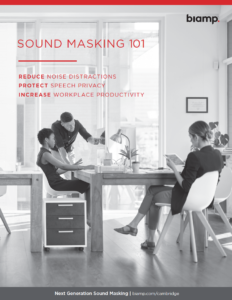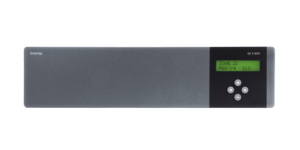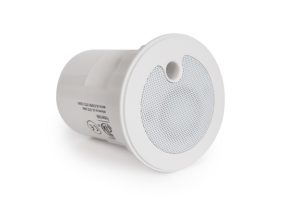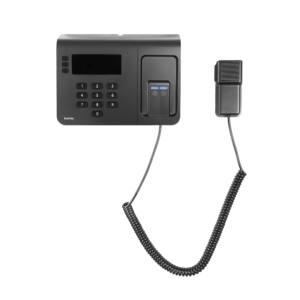Soft dB, the sound masking and acoustics consulting company, claims “To be optimal, sound masking must adapt to changes: It must increase during very active periods and become more discreet when the area is quieter.” This is objectively false.
Although it sounds enticing, there are five primary reasons why using adaptive technology is detrimental to a sound masking system’s performance and negatively impacts building occupants.
It reduces sound masking levels when they are most needed.
A sound masking system’s job is to provide speech privacy. It does this by reducing the distance at which a conversation can be understood by “covering” the talker’s signal. The primary purpose of adaptive technology, however, is to reduce the sound masking volume level at times of lower activity. By reducing the level during quiet periods, the sound masking’s effectiveness is reduced at times when privacy is needed most. This is simply a self-defeating feature that actually lowers speech privacy levels.
By the time the sound masking level has changed, the noise distraction has passed.
With constant broadband noise sources such as masking, slight variations of sound masking level can easily be perceived by building occupants. If these changes in volume are noticed they will most likely result in complaints by building occupants. To reduce the chance of this happening, a delay period must be introduced between the time at which a change in background level is detected and the time in which the sound masking signal level is adjusted. This delay in time often results in the “triggering event” being well in the past by the time in which the adaptive technology reacts. Thus, by the time a change is made, the triggering event is often well over and new conditions can exist.
There can never be enough microphones to measure levels consistently.
The adaptive approach relies on microphones installed into the ceiling. The proximity of the triggering noise source to the microphone is directly proportional to the frequency at which sound masking level shifts will occur. For example. if a single conversation between two persons takes place directly under a microphone position, the sound masking system adjustment may occur. If that same conversation takes place away from the microphone position, the conversational level may not trigger a change. In order to achieve any resemblance of consistency, a greater number of microphones (microphone arrays) would need to be deployed. The microphone to loudspeaker ratio in the Soft Db approach is simply too sparse to be effective with only a few of single sound masking controller’s zones capable of being controlled in this manner. This results in even greater inconsistencies as occupants move throughout an office space which again leads to complaints.
The microphones cannot distinguish between speech noise and other general office noises.
The inconsistencies in noise reaction measurement noted above can also be affected with other noise sources such as printers, air handling units, and other non-speech related noise sources leading to unnecessary changes in sound masking level.
Would employees want to work in an office with microphones potentially recording their conversations?
As adaptive technology utilizes ceiling mounted microphones, the workforce may have realistic privacy concerns. The sensor’s deployed with the Soft DB system are unsecured analog audio signals which could easily be tapped for eavesdropping purposes. This makes the technology inappropriate for both highly secure environments or other environments where corporate espionage is of concern. This makes adaptive technology particularly ill-suited for government installations as well.
Conclusion:
In general, it is a best practice to always calibrate a sound masking system to consistent levels based on the acoustic conditions and furnishings. Changes in sound masking levels should only occur in situations where a real need exists (i.e. reduced sound masking levels for security). This can easily be done with schedule based triggers at specific times making very gradual changes to a sound masking system’s overall sound level. Changing the sound masking levels when a space is occupied is a recipe for disaster when it comes to providing an “unobtrusive” environment for workers. Furthermore, reducing the sound masking levels at times where less activity is present is simply counterproductive as “quieter environments” rely on adequate sound masking levels to provide adequate speech privacy levels.





